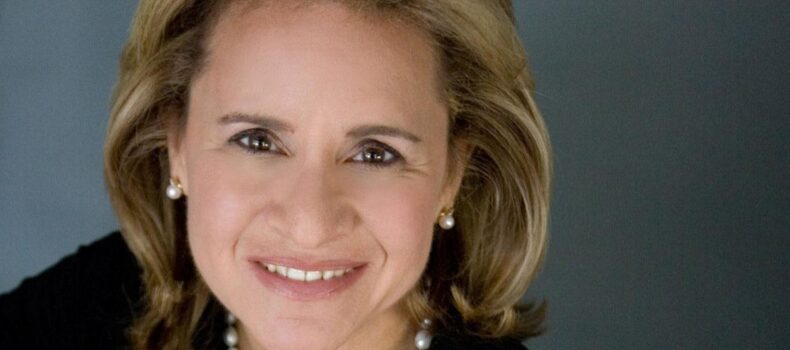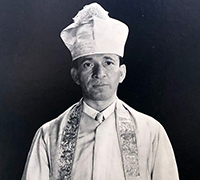A Sacred Legacy: An Interview with Deborah Katchko-Gray
Deborah Katchko-Gray is a fourth-generation cantor and the second woman to serve as cantor in the Conservative movement. She founded the Women Cantors’ Network in 1982 and served for 25 years at Congregation Shir Shalom (of Westchester and Fairfield Counties) in Connecticut. She has made ten recordings, published two books, and received the 2020 Debbie Friedman “Miriam” Award.
*This interview has been edited for clarity and length.
Let’s begin with where you were born and a little about your family.
I grew up in Stamford, Connecticut. My father was Cantor Theodore Katchko, son of the famous Cantor Adolph Katchko. Growing up, I always knew that I came from a cantorial family. My mother was also very musical, a pianist, accompanist, and organist. She and my dad met at the Juilliard Extension School.
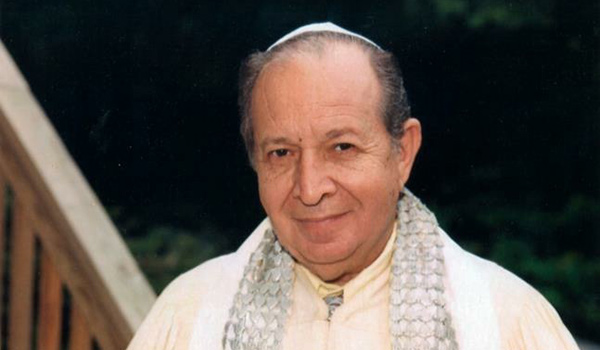
Cantor Theodore Katchko
The idea of loving music and having it be a major part of your life was a very natural thing. I grew up listening to my parents practice for the high holidays, and it was just so beautiful and elegant and magical. I would just sit and listen to them, from S’liḥot to N’ila. Years later when I had to study for the High Holy Days, my first big experience, I realized I had internalized and learned so much by osmosis just by listening.
What aspects of your education were influential in determining your career path?
I went to Boston University and studied with Elie Wiesel. That was really a huge part of my life and a big influence. Studying with him and understanding the miracle of Jewish survival made me want to be a cantor.
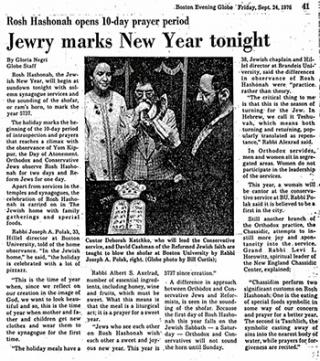 Boston Evening Globe newspaper clip from 1976 featuring Cantor Katchko-Gray
Boston Evening Globe newspaper clip from 1976 featuring Cantor Katchko-Gray
The idea of being a cantor hadn’t occurred to me, because I had only seen prominent men standing in front of a congregation. When I was at BU Hillel, Rabbi Joe Polak asked me to do the High Holy Days for the Conservative service. That was actually the first time in the city of Boston that a woman had led a traditional High Holy Day service. It made it into the Boston Globe. It was a big deal at the time—this was 1976.
Rabbi Polak told me about Sue Roemer, a self-taught Reform Cantor in Silver Spring, Maryland. And she became a very close friend. That was the first time I heard of a woman cantor. I later learned about Cantor Elaine Shapiro and we became good friends. She became the first official full-time Conservative woman cantor in the mid-1970s.
Can you talk more about how Elie Wiesel impacted you?
I took every class Elie Wiesel offered. His very first class was The Jewish Response to Jewish Persecution. It was the only class he ever taught on the Holocaust, and it was so painful for him to teach this class, he never taught it again. When Joel Rappel at the BU Library was assembling Wiesel’s archives, word got back to him that I had notes from the only class Elie Wiesel taught on the Holocaust. So, copies of my notes from that class are part of his archives. That experience got me thinking that there’s something very valuable and meaningful about these notes. So I wrote a book that I’m trying to get published called “Class Notes: A Lifetime of Learning with Elie Wiesel.”
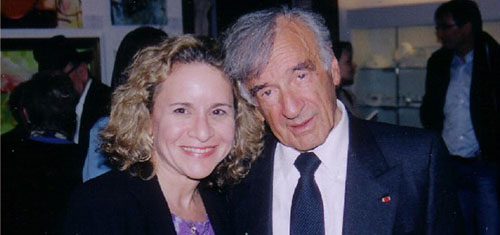
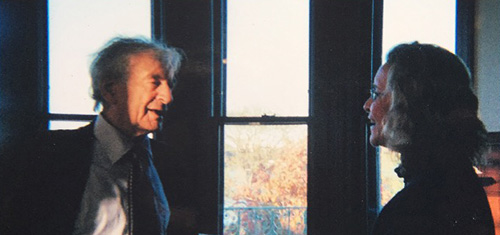
Cantor Katchko-Gray with Nobel Peace Prize-winner Elie Wiesel
We developed a very special friendship. And then we had a musical friendship, which was very special. When he turned 70, Boston University had a three-day symposium celebrating his life. His assistant, Martha Hauptman, suggested I lead a singalong in his office at the end of the symposium. I came in and did some Yiddish songs, Abi gezunt and A brivele der mamen. And at that song [A brivele der mamen], Elie Wiesel walked out of his office, joined us, and said, “You could wipe the floor with the tears from that song.”
“Studying with [Elie Wiesel] and understanding the miracle of Jewish survival made me want to be a cantor.”
Then he sat down with us, inspired to start singing songs from his childhood. And it was magical. And we were singing with him. We sang niggunim. And when he sang his Ani ma’amin version, which is now pretty famous, it was just incredible. You could feel the passion in his voice and the emotion. It was just an incredible experience that nobody who was there will ever forget. I gave a recording of it to Matthew Lazar, who was inspired to make concert arrangements for a performance at the 92nd Street Y—Memories and Melodies from My Childhood—which he did with Elie Wiesel. The Jewish Broadcasting Service recorded and shows it several times every year on Yom Hashoah. I’ve developed my own program I like to share, called Songs and Stories of Elie Wiesel, which has also been recorded and broadcast by JBS.
How did you come by your first job?
Coming by my first job was an interesting experience. My husband had heard about this pulpit opening. I called the rabbi and he said, “We’ve interviewed 18 men. At this point, we would interview a monkey”. He was ready to interview anyone, because they had been through 18 men and weren’t thrilled with anybody.
“I always was passionate about bringing in as much culture and beauty and music to the synagogue as I could.”
That really struck me because these men were graduates of cantorial programs. I come in with my guitar, literally holding my father’s hand, and they offered me a job. It was very exciting. But a lot of the cantors in the area were kind of like, “Who’s this young girl with the guitar?” It was 1981. I was 24 years old.
Then, I realized there were big chunks missing from my training: Hallel, the Three Festivals, Shabbat afternoon, funerals and weddings. I began studying with my father immediately. And that also was a lesson: that you can grow into a job. Not everybody knows every single thing and not everyone is a finished package. You still have something to offer.
How did the Women Cantors’ Network begin?
I was at a Cantors Assembly convention. I was sitting around a table with Cantor Elaine Shapiro and about a dozen women who were interested in being cantors. And we thought, you know, we really should get together. We should support each other and learn from each other, and just be there for each other on this new journey.
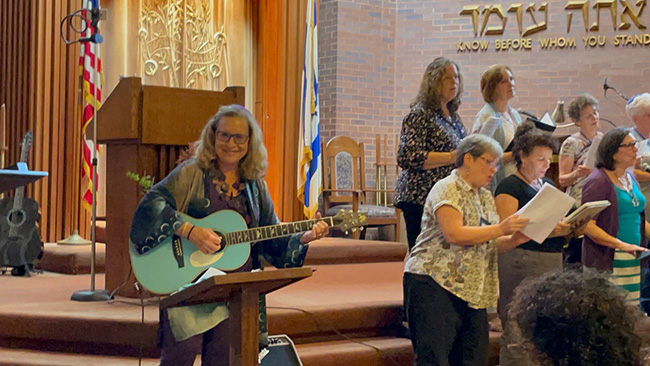
Cantor Deborah Katchko-Gray playing guitar with the choir at the Women Cantors’ Network, Patchogue, NY, 2023
So I put an ad in the Jewish Week and Moment Magazine that there would be a gathering of women cantors in Norwalk, Connecticut, in 1982. And 12 women showed up from all over. I’ll never forget, there was a woman from Brooklyn who was from an ultra-orthodox family. She loved to sing prayers. But she said if her family found out that she was at this conference, they would disown her.
There was no place to study cantorial music other than going to the traditional five-year school. I was told I was legitimizing illegitimate cantors, but it was really from a love of cantorial music and seeing the need to share it. I had this wonderful background of Katchko nusaḥ, music, and liturgy. I was eager to share it, but I was also eager to learn from other people. I’ve enjoyed watching things blossom and change. And these ideas that were seen as repulsive and revolutionary and disrespectful to the cantorate are now the norm.
Could you talk a little bit about your grandfather, Adolph Katchko, and his work, and some of the related work that you have done?
Editorial Note: Adolph Katchko (1888–1958) was born in the Kalisz region of Russian Poland and began singing in synagogue choirs as a young child. After musical studies and an early career as a cantor in Europe, he immigrated to the U.S. in 1921 where he served several synagogues in New York, most prominently Anshe Chesed. Katchko was revered as a cantor, teacher, composer, and author whose approach to the liturgy earned him much esteem and admiration.
In the beginning there was “the gray book,” which came about because he had a stroke. He decided to write down every phrase a cantor needed for the entire year, literally every phrase for the Shabbat, the Three Festivals, and the High Holy Days. He composed music based on the nusaḥ. It was very traditional but he kind of cleaned up the florid, Eastern-European style and made an American nusaḥ curriculum for the American cantor. It was revolutionary and treasured by cantors.
He wrote this book in 1951, and it was the only curriculum available to students at HUC. Later, he had a more formal book, known as “the black book.” Every cantorial student at HUC studied the black book. There was even a kind of underground market for copies among Conservative and Orthodox cantors. This came out in 1952.
My grandfather was a cantor at Anshe Chesed in Manhattan, and he was really seen as a cantor’s cantor. People would come in top hats and tails. Rabbinical and cantorial students would go to see him because he was the textbook example of how a cantor should be and what a cantor should sing. He used an organ. He had a choir. He was from an Orthodox background, but he appreciated the organ and the choir.
“These ideas that were seen as repulsive, and revolutionary and disrespectful to the cantorate are now the norm.”
It says here on the jacket: “There was yet on the American scene neither a clearly established tradition, nor a central ritual authority to make the decisions needed to establish it. The American cantor had to steer between the extremes of sacrificing both taste and tradition for the plaudits of the masses or clinging to a local minhag or nusaḥ transmitted by some individual cantor. This comprehensive work will help us to advance towards the coveted minhag America and could become one of the pedagogic pillars of American hazzanut, synthesizing the Eastern and Western elements.”
Editorial Note: For more on minhag America and its relation to the early American Reform movement, see the Introduction to Volume 1—“Jewish Voices in the New World: The Song of Prayer in Colonial and 19th-century America”–under the subheadings “Foundations of American Reform” and “American Reform Prayerbooks: Foundations for New Musical Expression.”
What I decided to do is to make it more accessible for women. A big problem for women cantors is that all of this music was written for men. It’s great for a baritone or tenor, but not so much for a soprano or alto. So, I decided to take some of his unpublished work and some of his classic pieces and arrange them in a way that would be comfortable for women’s voices. And I also included guitar chords.
Recently, I have started writing music with Beth Styles that starts with nusaḥ from my grandfather and then becomes a more contemporary piece that’s easier to sing. It’s called “Sacred Sounds Reborn.” It always begins with nusaḥ but moves it into something that can be done in any synagogue, with congregants becoming the choir. I don’t want to lose that traditional sound but I know that people want to be able to sing along.
Cantor Katchko-Gray’s collaboration playlist with artist and producer Beth Styles
Other than yourself, what were some of the musical forces in your synagogue over the years?
I was very lucky that there was a band leader in town named Jay Prince, who had access to fantastic session musicians and wedding musicians, in particular an amazing saxophone player named Mark Fineberg. I had him do the High Holidays with me and also several times a year we would do what we called “A Spirited and Soulful Shabbat.” He would play the flute, saxophone, and clarinet. Mark Fineberg and Jay Prince are featured in several of my recordings.
I had a gospel choir, with the fabulous conductor Gigi Van Dyke, come in for about 25 years come in on Martin Luther King Day. We would sing their spirituals and they would sing our liturgical music, and it was so powerful. For many people in the congregation, it was their favorite service of the year.
I found an amazing cellist, Julian Schwarz, who does Kol nidre at Central Synagogue in Manhattan. I’ve had him come and do concerts with his wife, Marika Bournaki. It’s an unbelievable gift to be able to hear that level of musicianship.
Cellist Julian Schwarz performs Ernest Bloch’s From Jewish Life, accompanied by pianist Luis Ortiz. Chung King Studios, New York, NY, 2013.
What advice would you give to a young person who’s considering becoming a cantor?
I think it’s important to have a good solid foundation and I would ask that they be as educated as possible. And I think cantorial school is the best way to go. I don’t think my road was the easiest. But then, when you get your job, it can’t only be about you. You’re not there just to fulfill your contract. You’re there to create experiences and memories and relationships within your congregation.
“They had been through 18 men and they weren’t thrilled with anybody. And that really kind of struck me because these men were graduates of the cantorial programs. And so I come in, literally holding my father’s hand into the synagogue with my guitar. And they offered me a job.”
I always was passionate about bringing in as much culture and beauty and music to the synagogue as I could. I learned early on if you don’t have a lot of funds, you can contact your local symphony. I had a string quartet come and they did beautiful concerts for a very reasonable cost. You can get a high school choral group or band. And then you’re bringing in the community. You have people coming into the synagogue who might never even step into one otherwise. I think it’s important to bring in other people who don’t know us well. Then we have something that we’re proud of that we can share, and for congregants that’s incredibly empowering.
I would also tell them that being a cantor can soak up your whole life. And I think it’s okay to be protective. Sixteen-hour days are not going to help anybody. You have to give yourself time to prepare and properly rest. Otherwise, you’ll burn out and then you’ll be resentful. My synagogue always found a way to make it work, to be generous and to show that they appreciated me. So it was really a wonderful experience. And I always try and give that advice to others, not to see the synagogue as an adversary, but as a partner.
What pursuits outside of music are you involved in?
There is something I’ve absolutely loved doing for the last 30 or so years. I have four sons, and I loved the idea of them each having a handmade tallit at their bar mitzvah. So, I learned how to do Swedish weaving and make a custom prayer shawl. You can make it very meaningful and put in their Hebrew name. I made a tallit for Julian Schwarz that had his favorite lines of Kol nidre in it. So he wears it when he plays Kol nidre at Central Synagogue.
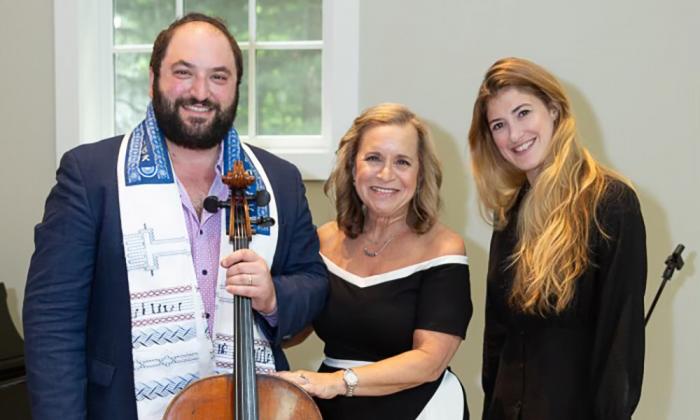
Julian Schwarz wearing a tallit made by cantor Katchko-Gray with pianist Marika Bournaki.
I’ve taught a lot of parents how to make them for their children. I have a book called “Prayerful Creations: How to Create a Tallit.” I find it relaxing and meditative while also being creative.

